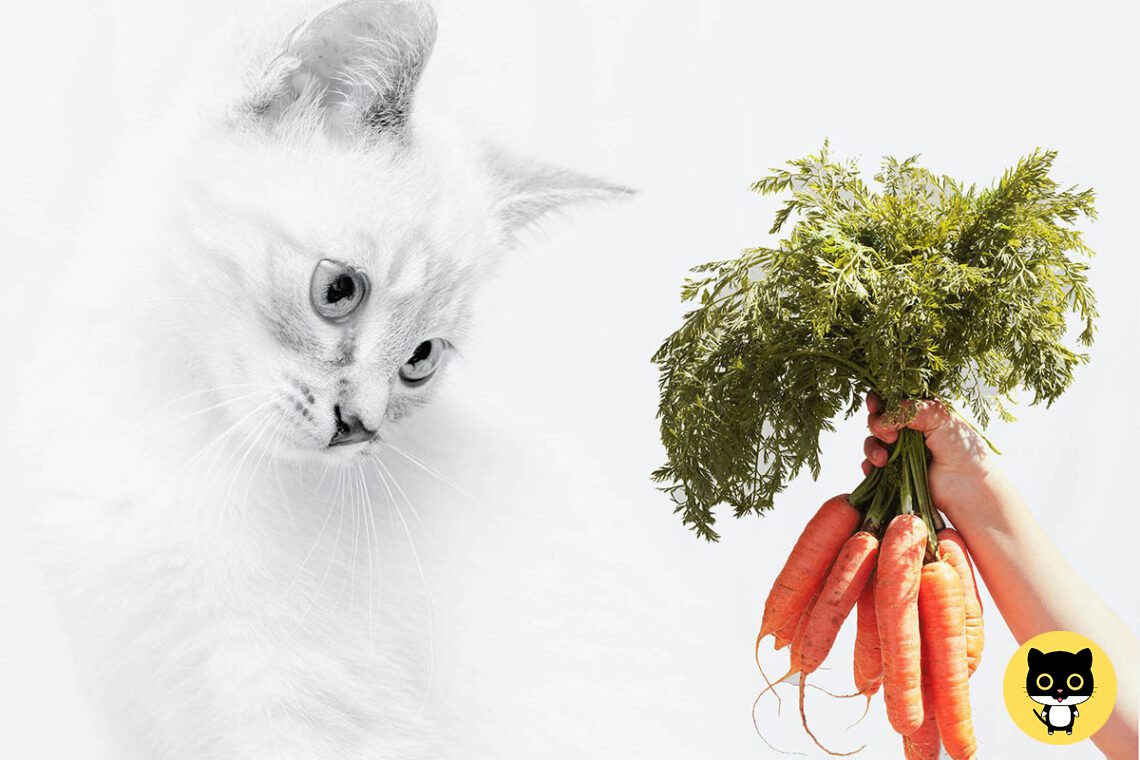Cats are known for being obligate carnivores, which means their bodies are designed to thrive on a diet primarily composed of meat. However, some cat owners may wonder if it’s safe and beneficial to include vegetables in their feline friend’s diet. In this guide, we will explore the topic of cats and vegetables, discussing the pros and cons, safe options, potential risks, and the overall impact on a cat’s nutrition.
Understanding Feline Nutrition
Before we dive into the topic of cats and vegetables, it’s crucial to understand the unique nutritional needs of cats. As obligate carnivores, cats require a diet rich in animal-based proteins and fats to thrive. These nutrients provide essential amino acids, vitamins, and minerals that cats need for optimal health.
While cats can derive some nutrients from plant sources, such as vegetables, it’s important to note that their bodies are not designed to efficiently process and absorb these nutrients. The primary source of protein for cats should come from animal-based sources, such as meat and fish.
The Role of Vegetables in a Cat’s Diet
While vegetables are not a necessary component of a cat’s diet, they can provide certain benefits when included in moderation. Vegetables offer a source of fiber, vitamins, and minerals that can support a cat’s overall health. However, it’s crucial to choose the right vegetables and ensure they are prepared and served appropriately.
Safe Vegetables for Cats
-
Broccoli: Broccoli can be a safe addition to a cat’s diet. It is rich in antioxidants and provides fiber, which can support a healthy digestive system. It’s important to cook broccoli before serving it to your cat to make it easier to digest and avoid potential choking hazards.
-
Carrots: Carrots are another vegetable that can be safely given to cats. They are a good source of vitamin A and provide dietary fiber. Cooked carrots are recommended to ensure they are easily digestible for cats.
-
Green Beans: Fresh or cooked green beans can be a beneficial addition to a cat’s diet. They are low in calories and high in fiber, which can aid in digestion and weight management for cats. It’s important to avoid canned green beans that are high in sodium.
-
Spinach: While spinach can be safe for cats, it should be given in small amounts due to its oxalate content. Oxalates can potentially contribute to urinary tract issues in cats. If your cat has a healthy urinary tract, small amounts of cooked spinach can be offered as an occasional treat.
-
Apples: Apples are safe for cats to eat, but they should be given in moderation. Remove the seeds and core before offering small pieces of apple to your cat. Keep in mind that apples are high in sugar and should be avoided for cats with diabetes or sensitive stomachs.
Vegetables to Avoid
While some vegetables are safe for cats, others can be toxic or difficult for them to digest. It’s crucial to avoid the following vegetables:
-
Onions, Garlic, and Chives: Allium vegetables contain compounds that can damage a cat’s red blood cells and lead to anemia. Even small amounts of onion, garlic, or chives can be toxic to cats.
-
Tomatoes: While ripe tomatoes are generally safe, other parts of the tomato plant, such as the leaves and stems, can be toxic to cats. Unripe tomatoes can also cause gastrointestinal issues.
-
Avocados: Avocados contain a high-fat content that can be difficult for cats to digest. Additionally, the avocado pit can pose a choking hazard.
It’s important to note that this list is not exhaustive, and it’s always best to consult with your veterinarian before introducing any new foods to your cat’s diet.
The Benefits of Vegetables for Cats
While vegetables are not essential for a cat’s nutrition, they can offer certain benefits when included in moderation. Here are some potential advantages of incorporating vegetables into your cat’s diet:
-
Fiber: Vegetables provide dietary fiber, which can support healthy digestion and bowel movements in cats. Fiber can help prevent constipation and promote regularity.
-
Vitamins and Minerals: Certain vegetables, such as carrots and broccoli, are rich in vitamins and minerals that can contribute to a cat’s overall health. These nutrients include vitamin A, vitamin C, potassium, and more.
-
Hydration: Some vegetables, like cucumbers, have a high water content, which can help keep cats hydrated. Moisture is essential for maintaining healthy kidney function and preventing urinary tract issues.
Incorporating Vegetables into Your Cat’s Diet
If you decide to include vegetables in your cat’s diet, it’s important to do so in a safe and appropriate manner. Here are some tips for incorporating vegetables into your cat’s meals:
-
Preparation: Cook vegetables before serving them to your cat to make them easier to digest. Avoid using oils, seasonings, or sauces that may be harmful to cats.
-
Chopping: Chop vegetables into small, bite-sized pieces to prevent choking hazards and make them more manageable for your cat to eat.
-
Moderation: Limit the amount of vegetables you give to your cat. Treat them as occasional snacks or additions to their regular meals. Remember that the majority of your cat’s diet should still consist of high-quality animal-based proteins.
-
Observe Your Cat’s Reaction: After introducing a new vegetable, monitor your cat for any adverse reactions. Allergies or digestive issues may occur, so it’s essential to be attentive to your cat’s response.
Consulting Your Veterinarian
Before making any dietary changes or introducing new foods to your cat’s diet, you should consult with your veterinarian. They can provide personalized guidance based on your cat’s specific needs, health conditions, and dietary requirements. Your veterinarian can help you determine the appropriate amount and type of vegetables to include in your cat’s diet.
Does specific vegetables work with your cat? Please register to leave a reply below and to post in the Forums.






